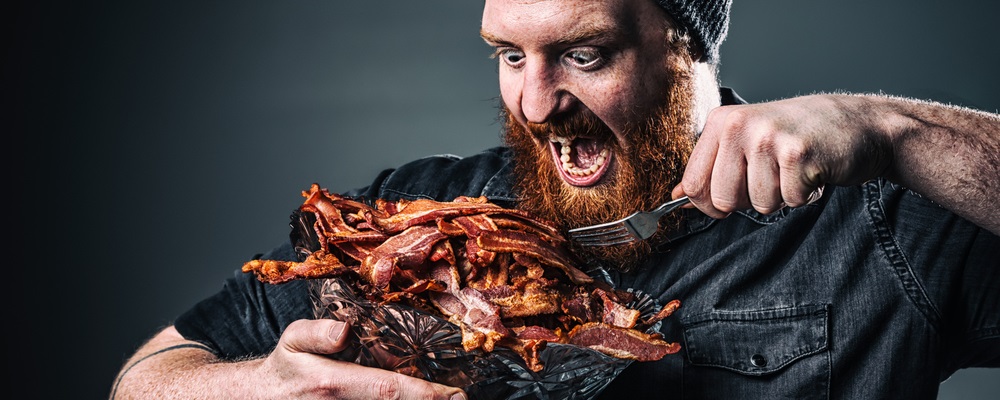I have a problem … I can’t say no to bacon.
Every time one of my coworkers throws a BBQ, I demand everything — even the veggies — gets wrapped in bacon. Sometimes I even ask for the bacon to be wrapped in bacon.
See? It’s a little bit of an addiction. But I’m not alone in this obsession. America — and countries around the globe — are making this commodity sizzling hot.
That demand is thanks, in part, to budding foreign markets. But Americans are a massive part of it. Market research firm Nielsen recently discovered that we consumed 14% more last year than in 2013.
And now the price of pork belly — where delicious bacon comes from — is at record highs. It’s up a jaw-dropping 80% this year.
The U.S. is in the midst of a bacon feeding frenzy, and who can blame us?
That’s why our frozen reserves are at a six-decade low, which has sparked worries of a bacon shortage … an aporkalypse if you will (a devastating notion to grease-loving Americans like me everywhere). Pig farmers just can’t keep up with the demand, although they are trying. The U.S. overall hog herd reached a seasonal peak of 71.7 million head in early June — a 3% rise from the prior year.
Yet our frozen pork-belly supply plunged to 31.6 million pounds in May — down a massive 59% from a year earlier. To put this into perspective, that’s the lowest amount for May since the USDA started recording it in the 1950s.
Yikes. It’s no wonder prices have soared.
I’m sure there are a lot of commodity investors out there kicking themselves for missing out on this — because this is precisely the type of supply-squeeze story they should have had on their radar.
In fact, if you had a system in place for analyzing commodity trends, you might have been able to profit from this price surge before the rest of Wall Street started sniffing out the bacon shortage.
Take our commodity expert Matt Badiali’s system for example. He has the ability to predict price turns months in advance. That’s because he knows every natural resource follows a repeatable pattern … called the commodity life cycle, which has three main phases.
- Phase 1 is the formation phase. This is when a resource is starting to come into demand, but supply can meet that demand.
- Phase 2 is the surge, when demand spikes but supply cannot catch up. This causes the price of the commodity to jump. Bacon is currently in this stage.
- Phase 3 is the taper … when supply exceeds demand, causing prices to fall.
As you likely guessed, the important part of this cycle is the timing: You want to invest at the start of the surge phase and get out at the taper phase — which can be incredibly difficult to do on your own, particularly if you don’t have much experience investing in commodities. That’s why so many investors stay out of this area — letting massive profits pass them by.
So I want to use this time to urge you to follow a proven system or a trader whom you trust if you’re interested in benefiting from these type of trends.
You can start doing your research by learning about Matt’s system. Click here to get an idea of how he picks hot commodity plays.
Because in the end, if we’re seeing an aporkalypse, we should at least be able to profit from it.
Also, feel free to write me with your bacon stories and worries at sovereigninvestor@banyanhill.com. I can never hear enough about bacon.
Catch you next week.
Regards,

Jessica Cohn-Kleinberg
Managing Editor, Banyan Hill Publishing




